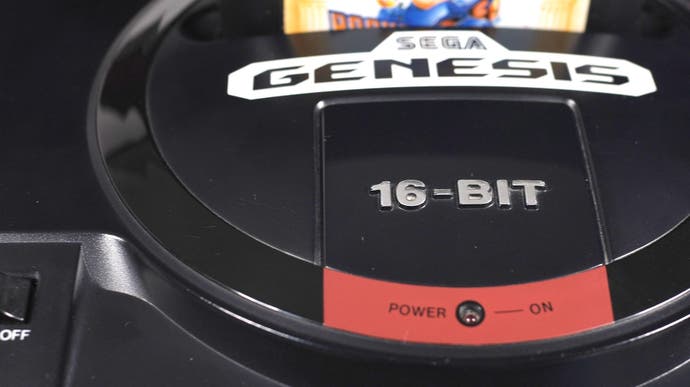Sega's legendary Blast Processing was real - but what did it actually do?
And did any Mega Drive/Genesis games really use it?
Blast processing. Controversial in its time, Sega used the phrase heavily to market its Genesis/Mega Drive console in the US against Super NES - and it was so successful that Nintendo was driven to take out double-page advertorials in the gaming press to rebut Sega's claims. Many dismissed it as marketing hot air - which is true to an extent - but the fact is that Blast Processing is indeed real and today we're releasing a proof of concept demo, put together by talented coder Gabriel Morales.
But why do we need a demo at all? After all, Sega's marketing did seem to imply that the blistering speed and wonderful visuals of Sonic the Hedgehog 2 was indeed powered by Blast Processing. However, it turns out that this is not the case, and it seems that Sega of America's marketing team latched onto the term from a technical presentation, disregarding what the technology actually does and where it could be applied - probably because it sounded rather cool.
The fact is that Blast Processing is such a hardcore, low-level application of the Mega Drive hardware that, astonishingly, it was never used in any shipping games and only in recent years has the technique been successfully mastered. And even then, its actual application in games is severely limited, with some interesting, but not exactly game-changing results.
So, what actually is Blast Processing? Well, the video on this page features an in-depth technical breakdown of how the technique actually works, but the basic idea is that the hardware's video processor is 'blasted' continuously, with the Mega Drive's 68000 processor working flat-out to change the colour of every pixel on an individual basis as the 'guns' on a CRT screen move from left to right and then down to the next line and so on - a process known as active scan. The obvious application here is in expanding the Mega Drive's somewhat constrained colour palette.
Blast Processing likely never made it to any shipping title for two key reasons. First of all, there's the question of synchronisation. Developers needed to be able to start the process with the very first pixel of active scan and knowing when that is and programming for it proved to be nigh-on impossible. Gabriel Morales describes the eventual synchronisation solution as basically chancing upon a needle in a haystack. But secondly, and perhaps more pressingly, Blast Processing essentially uses the entirety of the 68000's CPU time. You can run Blast Processing on a Mega Drive game, but you'd be unable to run anything with it.
So it's useless for standard cartridge games, but could conceivably have been used on Mega CD games, as the add-on has its own CPU which could run the game code. An obvious application for Blast Processing would be to improve the colour depth of the Mega CD's library of full-motion video games, for example. But did Blast Processing ever get any application anywhere? Well, Mega Drive scene coder Chilly Willy built a demo of Wolfenstein 3D using this, but beyond that, the chances look remote. What we can say is that Blast Processing demos only work on real hardware, the Mega Sg clone console and the cycle-accurate Blastem Mega Drive emulator.
All of which leads us to the Blast Processing demo we're releasing today, available right here. The demo itself is simple and straightforward, delivering a single, static image to the screen. What's special about this is that the bitmaps use a much wider colour range than usual Mega Drive software, and that's because each individual pixel is being 'blasted' with a different background colour in perfect synchronisation with the video output.
The demo exists simply because in putting Analogue's Mega Sg through its paces, I was looking for the most challenging of technical workouts for the machine and Blast Processing seemed like a natural fit. I contacted Gabriel Morales - a highly talented Mega Drive and Dreamcast coder - and he was intrigued enough by the project to put the work into this demo.
And that's the story of Blast Processing. While it never made it into any games, the Mega Drive was never lacking for low-level hardware tricks that added greatly to a title's visual makeup. At the most basic level, raster interrupt tricks could adjust the colour palette mid-scan, allowing for the water effects in Sonic 2, for example, but that really is just the tip of the iceberg. Throughout the machine's lifetime, clever coding produced an almost generational leap in the effects seen in Mega Drive titles - but Blast Processing, unfortunately, wasn't one of them.



